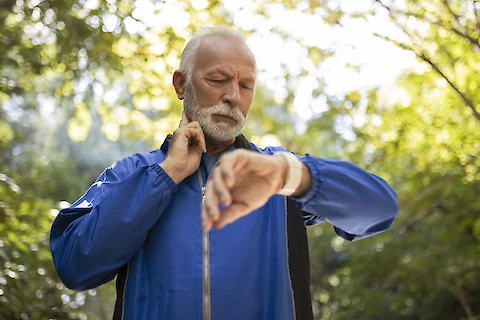
As we age, it is increasingly important to pay attention to our health. Monitoring heart rates can be an effective way to track our health over time and make sure that we are not at risk for any negative consequences due to an irregular heartbeat or unhealthy lifestyle. This blog post will discuss the importance of keeping healthy heart rates as a senior and provide guidance on how seniors should measure their resting and active heart rates, as well as what steps they should take if either number is too high.
How Seniors Should Measure Their Resting Heart Rate
A healthy resting heart rate for an adult is between 60 and 100 beats per minute. For a senior, the average resting heart rate should be at least 70 bpm or lower. To measure resting heart rate, follow the following steps:
- Find a comfortable position. Seniors should lie down on a flat surface and relax all of their muscles while taking deep breaths.
- Place two fingers on the inside of the wrist just beneath the base of the thumb and press lightly with both to feel the pulsation from the heartbeat.
- Count each pulse for one full minute over 30 to 60 seconds.
How Seniors Can Safely Measure Active Heart Rate
Active heart rate should be somewhere between 50 to 85 percent of the maximum heart rate. Maximum heart rate, according to Medical News Today, is calculated by subtracting the age from 220. For a 65-year-old senior, the maximum heart rate would equal 155 and the corresponding safe range for active exercise would fall between 77 - 131 bpm (50-85%).
To measure an accurate active reading, do the following:
- Start by finding an activity that can give exertion or intensity level at or slightly above 80% of a senior's maximum capability. Try walking quickly on a treadmill or similar apparatus with a moderate-grade incline setting.
- Measure the pulse/heartbeat frequency either manually anytime during the exercise period. This is a similar process to measuring the resting heart rate that is described above.
- Compare it against a predetermined normal range of beats per minute at various intensities (normal resting: 60-100 bpm; light activity >=131 bpm; hard effort <=155bmp).
Managing High Heart Rates in Seniors
If a senior's heart rate is high, especially after activity, then it is important to take the necessary precautions. First and foremost, speak to a doctor if seniors are having any symptoms or worrying signs related to a rapid heartbeat or an unexpected heart rhythm reading. There might also be additional steps that a doctor will recommend. This can include reducing stress levels, avoiding caffeinated substances, getting enough sleep, and incorporating elements of meditation into daily life.
Senior Helpers Encourages Senior Health
Monitoring heart rates in seniors is an effective way to stay mindful of one's health. It's important to pay attention and take the necessary steps when a senior's heart rate is too high either at rest or after activity. Reach out for help from family members, friends, and medical professionals when needed.
Senior Helpers Concord is here to provide support and guidance on all matters related to senior health to seniors in the Concord, Pleasant Hill, Benicia, Brentwood, and Martinez areas. Contact us today to learn more!